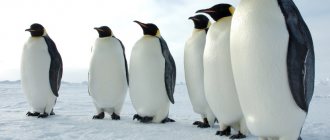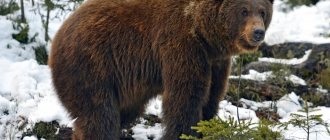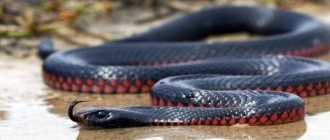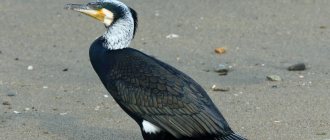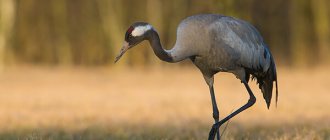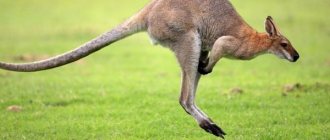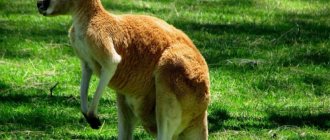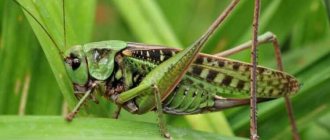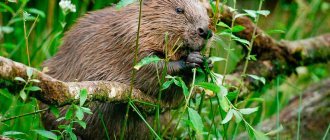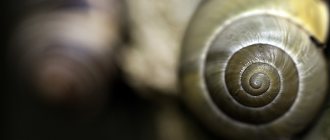| Latin name: | Spheniscidae |
| English name: | To be confirmed |
| Kingdom: | Animals |
| Type: | Chordata |
| Class: | Birds |
| Squad: | Penguin-like |
| Family: | Penguins |
| Genus: | To be confirmed |
| Body length: | 130 cm |
| Wing length: | To be confirmed |
| Wingspan: | To be confirmed |
| Weight: | 35000—40000 g |
Emperor penguin
The emperor penguin is the largest representative of the penguins. It can reach a height of up to 140 cm, and its weight can exceed 40 kg. Females are slightly smaller than males. It is distinguished by orange coloring on the neck and cheeks. Chicks are born with gray or white down. Emperor penguins are capable of diving to depths of about 500 meters. They hunt in groups.
An Emperor penguin egg hatches for 70-100 days. First the female sits on the egg, then the male replaces her. A penguin can sit on an egg for up to 50 days without eating. After being replaced by another penguin, the second parent goes to sea to hunt. They live on the continent of Antarctica.
How do they reproduce?
The age at which sexual maturity occurs depends on the species of penguin. In dwarf species, the first offspring appears at the age of 2-3 years, large birds are ready for breeding only at 4-5 years.
Penguins lead a social lifestyle: while incubating eggs and raising chicks, they form colonies - huge flocks, the number of which can vary from several tens of thousands to several million individuals.
Males are the first to arrive at nesting sites. They occupy a site and build a nest. The exception is emperor penguins, which hatch their eggs hidden in a fold of skin near their paws.
Then females appear in the colonies. Researchers have found that birds that form relatively small groups are monogamous and practically do not change partners. In penguins that live in numerous colonies, females choose different males to mate with.
Females of the genus of great penguins always lay only one egg, which weighs about 450 grams. In other species, the clutch consists of two (less often three) eggs weighing 50-100 grams. The duration of the incubation period is from 30 days in small birds to 60 days in large ones. Both parents are involved in incubating the eggs and caring for the chicks.
For the first 3-4 weeks after the birth of the cubs, one of the parents remains to guard the nest, while the other goes hunting. Next, all the penguin chicks gather in groups, which are looked after by several adults, and the males and females are engaged in obtaining food for themselves and the chick. Adult birds feed the babies with half-digested fish and crustaceans.
OWL
King Penguin
Slightly smaller than the Emperor penguins are the King penguins. Their height is approximately 1 meter, and their weight ranges around 20 kg. They are distinguished from other penguins by bright orange spots on their cheeks and neck. King penguin chicks have brown down when they are born.
During the courtship dance, the male makes loud sounds and raises his head up so that the female can see orange spots, which indicate sexual maturity. When the female becomes interested in the penguin, they begin to dance together. Their heads go up and down, and then they put their heads on each other's necks. Mating lasts only up to 10 seconds, and the process of dancing and mating is repeated again.
Danger
Harsh Antarctica tests the resilience of remarkable seabirds. The harsh climate is not the only challenge. Their main enemies in the ocean are killer whales and sharks.
Agility and speed of movement in water often save the life of a penguin. For self-defense, brave birds use their beaks and fins. On land, gulls hunt for clutches of eggs, and unattended hatchlings can fall into the clutches of brown skuas.
Little Penguin
The smallest member of the penguin family. The height of such penguins is usually up to 40 cm, and their weight is up to 1.5 kg. It differs in the color of the feathers on the back, wings and head - they are dark blue. This species of penguin has become famous for the most faithful relationships between penguin pairs. Sometimes loyalty lasts a lifetime. Little penguins live in the south of mainland Australia. While on sandy beaches, they can dig holes. Penguins dive shallowly - only up to 50 meters deep. The eggs hatch for 30-40 days. After 50-60 days, the chicks are ready for independent life.
Hockey club mascot
The National Hockey League club from Pittsburgh has been called the Hornets since its founding. But the club owner didn’t like the name.
In 1967, a competition was held among fans, and 700 out of 26 thousand people suggested the name “Penguin”. This is how the Pittsburgh Penguins began playing in the NHL. The editors of most-beauty wish the penguins with hockey sticks many wonderful victories!
Magnificent Penguin or Yellow Eyes
A representative of this species is 70-80 cm tall and weighs up to 7 kg. Distinguished from other penguins by the yellow stripe around the eyes. The beak and paws are red. Unlike other penguins, they rarely form colonies. A very rare species of penguin. Their number is estimated at only about 4,000 pairs. The species is endangered. In 2004, for unknown reasons, 50-75% of all hatched chicks died.
Inhabitants of Africa
The African penguin holds the record for names. He is called a donkey because his voice is very similar to the cry of a donkey. The second name is spectacled, because of the circles around the eyes. It is also called black-footed because its paws are black.
In South Africa it is one of the main living attractions. On the upper part of the chest, each spectacled penguin has a horseshoe-shaped design. The most interesting thing is that these drawings are as unique as a person’s fingerprints.
Adele
Author: Stan Shebs.
The beautiful flightless sea bird received its specific name thanks to the French navigator and explorer Jules Dumont-Durville.
He named the new species after his wife. Take a closer look, there is a certain French charm in this penguin. Based on it, Japanese and Soviet animators drew the little penguin Lolo. This Antarctic species inspired the creators of all parts of Madagascar. Children and adults immediately fell in love with the Madagascar mischief-makers.
Chinstrap penguin
A bit close to Adelie penguins. Height is approximately 60-70 cm, but weight is smaller - up to about 5 kg. Distinguished by a white stripe of feathers on the head that extends from ear to ear. The male also incubates the eggs alternately with the female for about 35 days. It is this type of penguin that is capable of moving away from the coast into the open sea at distances of up to 1000 km. And they are capable of diving to a depth of 200-250 meters.
Features of the bird
These interesting animals can swim and dive perfectly, but are not able to fly. In many photos, penguins look clumsy and funny. This is due to the structure of their body and the structure of their limbs.
The bird has a special body shape that helps it swim well. In addition, they have a very developed keel. He has powerful muscles. This department accounts for up to 25% of their total weight.Penguins are very plump, their body is compressed at the sides and completely covered with feathers. The head is supported on a short, mobile neck. The beak of birds is powerful and sharp.
Over the years of evolution, the wings changed their appearance and became similar to elastic fins. With their help, birds move well in the water. They have short, thick legs extended back. They have 4 fingers, connected by membranes.Because of their structure, penguins have to maintain an upright position. A small tail, which is used as a support, helps the animal maintain balance. It consists of hard feathers. There are not very many of them - about 20 pieces.
All penguins have approximately the same color - a light belly and a black back.
Once a year they shed their feathers, with new ones replacing the old ones at different times, so they look unkempt and disheveled. During this period, animals remain on land, hide from the winds and do without food.
Depending on the species, penguins come in different sizes. For example, imperial ones reach up to 130 cm in length and weigh about 40 kg, while small ones are only 40 cm long and weigh about 1 kg.
Galapagos penguin
It is a unique representative of the penguin species. And its uniqueness lies in its habitat. This is the only penguin species that lives just a few tens of kilometers from the equator. The air temperature there ranges from 19-28 degrees Celsius, and the water temperature is 22-25 degrees. The Galapagos penguins themselves are quite small. Their height is up to 50 centimeters and their weight is up to 2.5 kilograms. A stripe of white feathers runs from the neck to the eyes. Unfortunately, this species is endangered. There are only about 2,000 adult pairs.
Where do they live?
Most penguin species live in Antarctica and nearby islands. The range also includes the coastal waters of southern Africa, Australia, and islands in the southwestern Pacific Ocean. Penguins are found along the west coast of South America, with their northernmost habitat being in the tropics. Penguins are cold-loving animals, so in warm climate zones they settled only in those coastal areas washed by cold currents.
Since the planet lacks cold currents connecting the two polar regions of the planet, the penguin family that appeared in the Southern Hemisphere was unable to cross the equator and reach the Arctic.
Where live
Most penguin species have seasonal migrations. During the breeding season, birds return from feeding sites to nesting sites, swimming from 700-900 km ( golden penguins ) to 3.5-6 thousand km ( thick-billed penguins ).
Emperor penguins establish colonies in coastal ice, choosing places surrounded by rocks, hummocks and other natural shelters. For Adélie penguins, the usual habitat during breeding is rocky shores with a bare and snow-free surface. Little penguins settle on coastal slopes covered with vegetation. They use crevices in rocks or burrows dug in sand as shelters.
POLAR BEAR
Natural enemies
The lives of penguins are constantly in danger. In nature, these cute creatures have plenty of enemies, not counting the destructive human activities, which have the greatest impact on the decline in the Antarctic bird population.
The hardest thing is for little penguins, about 50% of which die in the first year of their lives. The main enemies of the chicks are birds of prey, such as the southern giant petrel. In addition to the danger of dying from claws, babies are constantly at risk of death from starvation.
Marine predators are considered the natural enemies of adult penguins. These include sharks, killer whales, seals, leopards and sea lions. About 6-10% of birds die as a result of collisions with these animals.
To the above, we can also add that feral dogs abandoned by people are also very dangerous for settlements of clumsy creatures that are unable to escape from enemies on land. In the twentieth century, entire colonies of penguins were destroyed by wild dogs on the Galapagos Islands.
First mentions
The first mention of penguins was made by the navigator Antonio Pigafetta, who was on board Ferdinand Magellan's ship around the world in 1520. The crew discovered the animals, likely near Punta Tombo in Argentina. In his notes, Antonio called the penguins “strange geese.”
An earlier anonymous journal entry from Vasco da Gama's 1497 voyage around the Cape of Good Hope mentions flightless birds the size of ducks.
Cubs
Let's finish our photo gallery with penguins. They are different for each species, but always cute and funny. The royal cubs are dressed in red fur coats, and the funniest ones are perhaps those of the imperial type.
Adults tenderly care for their offspring. In the colonies, unique kindergartens are created, where little penguins receive their first knowledge about the world around them.
?
Classification of the Penguin family (Spheniscidae)
The order Sphenisciformes includes the only modern family - Penguins, or Penguins (Spheniscidae), in which 6 genera and 18 species are distinguished (according to the datazone.birdlife.org database from November 2018).
Genus Aptenodytes JF Miller, 1778 - Emperor penguins
- Aptenodytes forsteri R. Gray, 1844 - Emperor penguin
- Aptenodytes patagonicus F. Miller, 1778 - King Penguin
Genus Eudyptes Vieillot, 1816 - Crested penguins
- Eudyptes chrysocome (JR Forster, 1781) - Crested penguin, golden-crested rock penguin
- Eudyptes chrysolophus (JF von Brandt, 1837) - Golden-haired penguin
- Eudyptes moseleyi Mathews & Iredale, 1921 - Northern crested penguin
- Eudyptes pachyrhynchus R. Gray, 1845 - Victoria penguin
- Eudyptes robustus Oliver, 1953 - Snar's crested penguin
- Eudyptes schlegeli Finsch, 1876 - Schlegel's Penguin
- Eudyptes sclateri Buller, 1888 - Great crested penguin
Genus Eudyptula Bonaparte, 1856 - Little penguins
- Eudyptula minor (JR Forster, 1781) - Lesser penguin
Genus Megadyptes Milne-Edwards, 1880 - Magnificent Penguins
- Megadyptes antipodes (Hombron & Jacquinot, 1841) - Yellow-eyed penguin, or magnificent penguin
Genus Pygoscelis Wagler, 1832 - Chinstrap penguins
- Pygoscelis adeliae (Hombron & Jacquinot, 1841) - Adelie Penguin
- Pygoscelis antarcticus (JR Forster, 1781) - Chinstrap penguin
- Pygoscelis papua (JR Forster 1781) - Gentoo (subantarctic) penguin
Genus Spheniscus Brisson, 1760 - Spectacled penguins
- Spheniscus demersus (Linnaeus, 1758) - Spectacled penguin
- Spheniscus humboldti Meyen, 1834 - Humboldt penguin
- Spheniscus magellanicus (JR Forster, 1781) - Magellanic penguin
- Spheniscus mendiculus Sundevall, 1871 - Galapagos penguin
